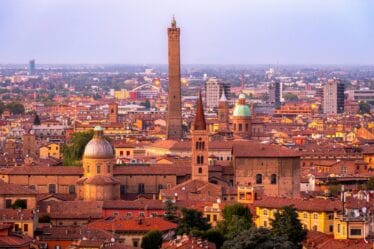

A Tuscan Tale of Comics, Culture, and a Cartoon Mouse
Let’s travel back to Florence in 1932—a city buzzing with creativity, intellectual ferment, and, surprisingly, cartoon mice. Picture the scene: television doesn’t exist yet, radios are luxury items, and cinema is pure magic that enchants the masses. It’s in this world that, quietly yet powerfully, a new weekly magazine makes its debut on Italian newsstands on December 31st, 1932: Il Giornale di Topolino.
But this isn’t just the ordinary story of a comic book’s arrival. Far from it. This is a tale of genius, intuition, and a dash of the kind of visionary madness only true entrepreneurs possess. And at the heart of it all is the legendary Casa Editrice Nerbini of Florence.
The Origins of a Comic Revolution
When Mickey Spoke Tuscan
Founded by the bold and ambitious Giuseppe Nerbini, an ex-newspaper vendor turned successful publisher, the Nerbini publishing house was already known for popular literature series and even leftist socio-political essays. Imagine that—the same company that once published socialist critiques was now about to introduce Italy to the most capitalist and American mouse of all time! This cultural paradox is nothing short of poetic and would give even today’s boldest marketing strategists a run for their money.
Giuseppe’s son Mario Nerbini, who by 1932 had taken the reins of the company, likely saw one of the famous “Mattinate Topolino” (Mickey mornings) at the Cinema Savoia in Florence. Somewhere between popcorn and laughter, he must have realized something: this dancing mouse, with his round ears and white gloves, was destined to become an icon. It was a prophetic intuition—especially in an era when comic books were still viewed with suspicion, considered frivolous entertainment for idle children.
A Newspaper Without Mickey? Not Exactly…
When Mickey Spoke Tuscan
Thus, Il Giornale di Topolino was born. It featured eight large-format pages, almost like a miniature newspaper. But here’s the twist—the early editions had no original Walt Disney content and weren’t even traditional comics as we know them today. That’s right: the “Mickey Mouse Newspaper” began life without real Mickey Mouse comics!
The front page, printed in color, did feature Mickey. However, the drawings were made by Giove Toppi, an Italian artist, and the panels lacked the iconic speech balloons. Instead, the characters “spoke” through poetic captions underneath the drawings—a charming heritage from the “Corriere dei Piccoli”, Italy’s first children’s weekly magazine.
To better understand that format, here’s an archive from Lambiek Comiclopedia on Giove Toppi’s work.
Meet the Man Behind the Rhymes
When Mickey Spoke Tuscan
The other pages were a delightful mix of curiosities: adventure stories in prose, pseudo-educational columns, and humorous illustrations. At the editorial helm was none other than Paolo Lorenzini, who signed his work as Collodi Nipote—the nephew of the creator of Pinocchio. This symbolic lineage created a literary bridge from Italy’s most famous puppet to America’s most famous mouse—an astonishing editorial coincidence that almost seems orchestrated by fate.
You can read more about this unique literary connection in the archives of the Fondazione Nazionale Carlo Collodi, which celebrates both the author and his legacy.
A Cultural Experiment That Made History
In reality, Il Giornale di Topolino was never just a children’s magazine. It was a cultural experiment, a bridge between worlds, a bold bet that, despite its quirks, paved the way for Italy’s golden age of comics.
It brought American pop culture into Italian homes in a form that felt both familiar and fresh—Tuscan-tinged, poetic, and paradoxically patriotic. In doing so, it helped shape a generation of readers and artists who would go on to redefine the role of comics in Italy and beyond.
Today, you can explore Italy’s comic history at the Museo del Fumetto di Milano, which hosts exhibitions dedicated to vintage comic art and pop culture.
Conclusion: A Mouse, a City, a Legacy
When Mickey Spoke Tuscan
This story isn’t just about Mickey Mouse. It’s about Florence. About how a mouse with an American accent could, for a while, speak with a Tuscan soul. It’s about visionary publishing, historical irony, and the unexpected poetry of early Italian comics.
For those who love hidden histories and vintage curiosities, this tale is an invitation to rediscover Florence not just as the city of Dante and Michelangelo, but also as the first Italian home of Topolino—who, for a short but magical time, spoke in rhyme.
If you’re curious to learn more about the early days of Mickey Mouse in Italy, you can browse rare issues and memorabilia via Catawiki’s Disney auctions.



